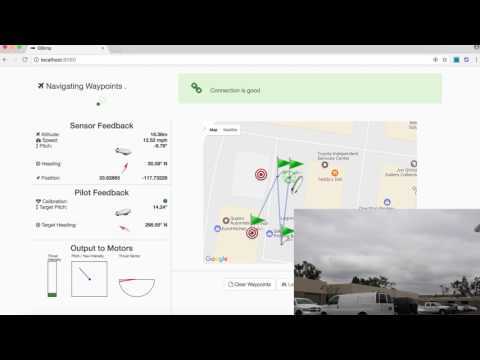That’s a lot of questions 
So, for context, I don’t actually manufacture the blimps myself. This is all done in conjunction with Larry Fleming at http://eblimp.com I’ve just been working on the autopilot module.
And yes, solar powered blimps are a thing. Here’s another blimp using solar panels: Solar Airship - Mothership Demo Video - YouTube The blimp in the video there is actually energy positive, so it can fly as long as the sun is out. Flight time otherwise ranges from 30 minutes to an hour and a half depending on how you fly it…blimp size and payload also plays an obvious factor.
I had to google what a high efficiency ducted propeller is, but yes, the blimp uses that. I’m not sure what you mean about the break implementation, but if you’re talking about the thrust vector of the motors then yes, that’s been the most complicated aspect of developing the autopilot at least.
Propellors by default will spin the same…when the blimp applies a yaw action, a motor differential will eventually be applied if more rotational force is required. I’m actually quite proud of that piece because there’s an algorithm in place that will allow the blimp to apply a motor differential and still maintain a constant force applied in the vertical direction perpendicular to the ground.
For the actual aircraft design, I don’t think I could answer those questions very well except to say that Larry, the guy that designs the blimps, has arrived at the current design after 20 years in business, and when he explains his rationale to me it’s quite convincing.
The kill button was written in case of a problem that might cause the blimp to fly away, especially during testing. This will just shut down the motors and pitch down.
Heat, but not so much wind, can make it fly up and away, but in practice I think this is a rare problem. There is in fact an emergency helium release valve in case this happens.
I’m not sure about relative weight, but the blimp is 90-95% buoyant.
And currently we use helium. Personally I’d be very interested to find cases in which hydrogen would be viable. The context is that this is an unmanned drone, and so as long as a catastrophic scenario is still safe, I’d be up for…the bigger concern would probably be around negative publicity for such a thing, because then I’d look like I didn’t know what I was doing. Purchasing hydrogen is 1/5 the cost of helium, and if you really got a business scaling that uses hydrogen, you could end up buying the capital to produce hydrogen to the point of single digit dollars per fill up of the blimp.
As for carrying people…currently no…but if I kept working on this for the next decade…maybe.





